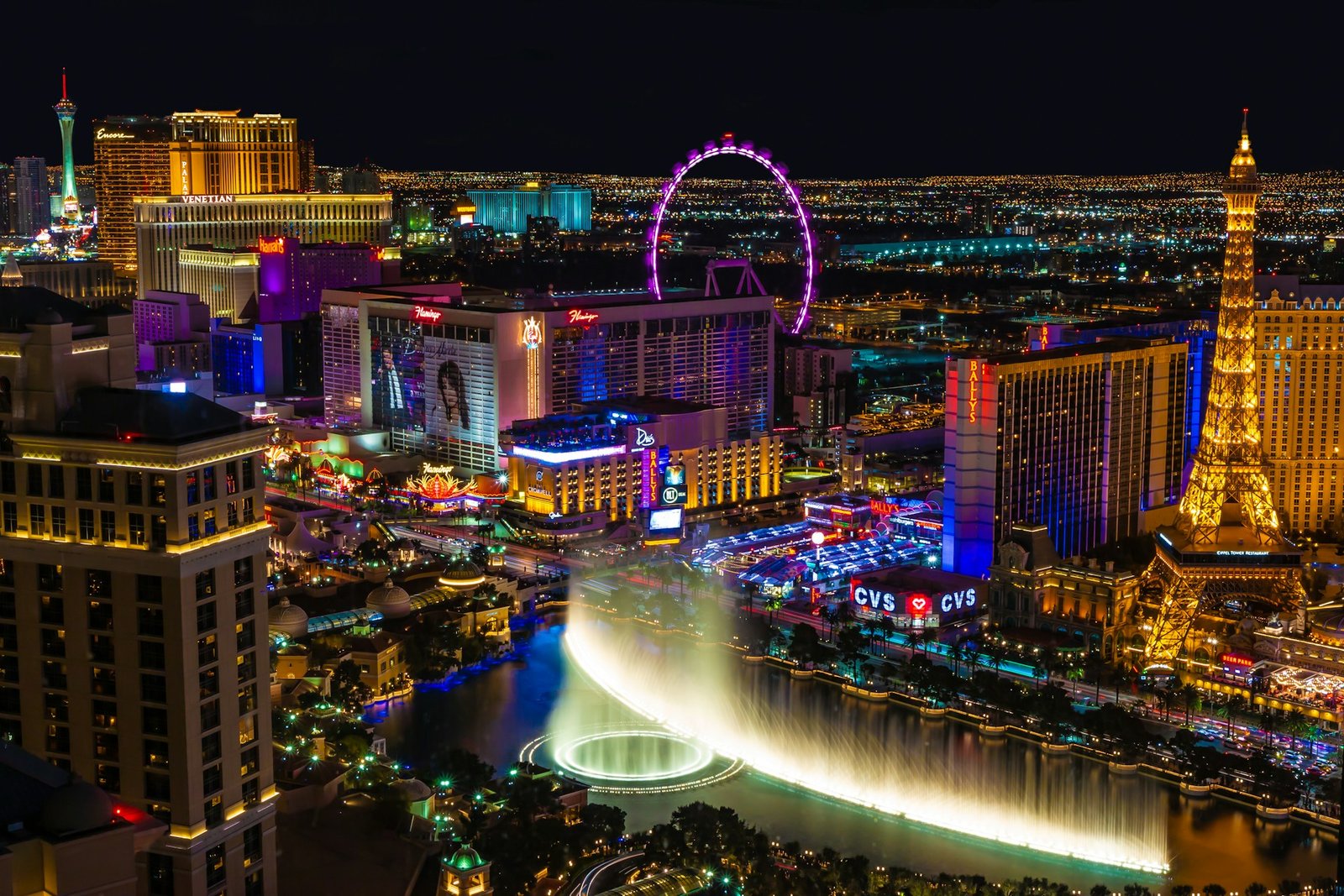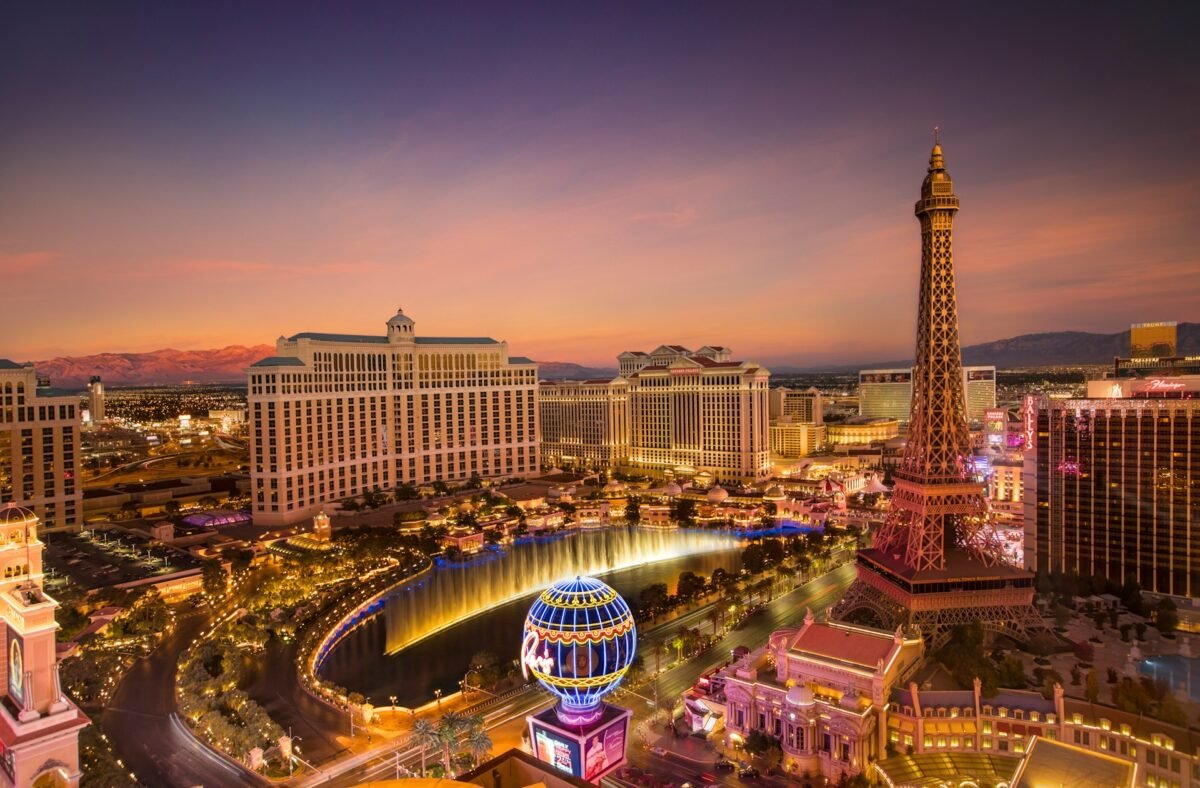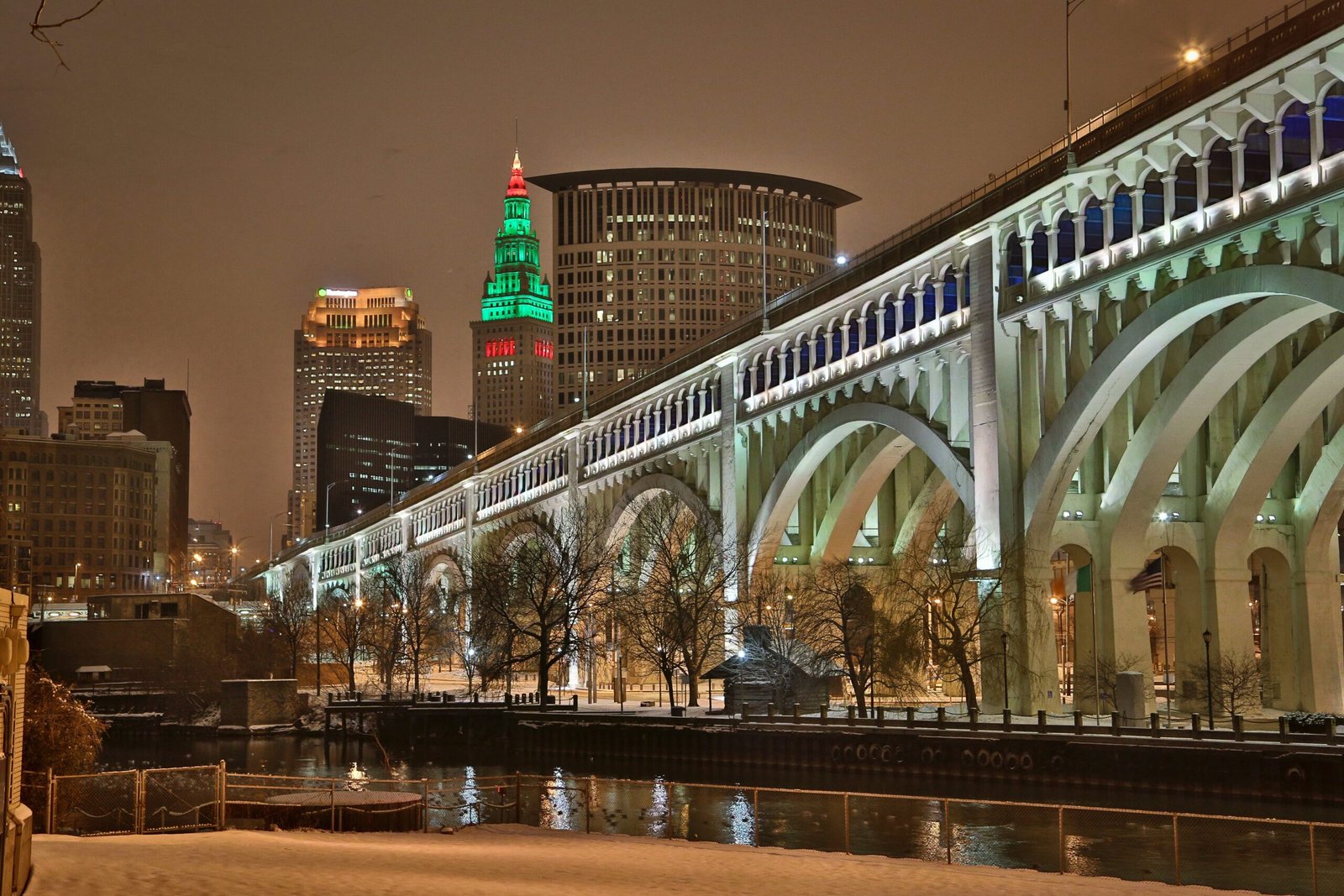Las Vegas has more national parks within a day’s drive than any other U.S. city.
While the neon skyline engages visitors at night, the surrounding natural wonders provide equally breathtaking daytime experiences.
The city’s unique character and progress shine through landmarks like the towering Luxor pyramid and historical signs at The Neon Museum. Visitors can explore iconic attractions like the Bellagio Fountains and venture to nearby nature spots such as Valley of Fire State Park. This park, Nevada’s first and largest, features stunning red sandstone formations and evidence of human activity that dates back 11,000 years. The famous buildings in Las Vegas create a dramatic contrast with natural wonders like Death Valley National Park. This national park holds the distinction of being North America’s lowest and hottest place, with Badwater Basin sitting 282 feet below sea level. This piece will help you experience the best of both worlds, whether you want to see Las Vegas monuments or take a charter bus rental to the Grand Canyon, which draws 6 million visitors each year.
Iconic Las Vegas Landmarks That Define the Strip
The Las Vegas Strip captivates visitors with architectural marvels that shape the city’s skyline. Dancing waters and towering replicas create an unmistakable silhouette that people recognize worldwide.
The Bellagio Fountains And Conservatory
The breathtaking Fountains of Bellagio stand as the most ambitious water feature anyone has created. These choreographed displays stretch more than 1,000 feet with water soaring up to 460 feet high. Music and light combine to create an unforgettable spectacle. Visitors can catch shows every 30 minutes during afternoons and every 15 minutes from 8 PM to midnight. The timing works perfectly for evening outings.
The Eiffel Tower at Paris Las Vegas
The Eiffel Tower at Paris Las Vegas rises 540 feet above the Strip as a half-scale replica of the Parisian original. Visitors can enjoy panoramic city views from its observation deck 460 feet up. The tower’s reputation as one of Las Vegas’s most romantic spots draws couples nightly to its light show, inspired by its French counterpart. Construction required 5,000 tons of steel, and designers added faux rivets to match the authentic design.
Historic and Cultural Vegas Monuments Worth Visiting
Las Vegas landmarks help preserve the city’s colorful history through cultural monuments that showcase its unique progress beyond the glitz of the Strip.
The Neon Museum and the Boneyard
The Neon Museum displays more than 200 rescued neon signs in its two-acre outdoor exhibition space, known fondly as the “Neon Boneyard.” This unique collection has featured iconic pieces from legendary establishments like Caesars Palace, the Moulin Rouge Hotel, and the Golden Nugget since its founding in 1996. The museum’s North Gallery houses “Brilliant!” – an immersive audiovisual show that brings non-functional signs back to life through projection technology. The museum’s popularity continues to grow, with annual visitor numbers reaching 200,000 in 2023.
The Mob Museum in Downtown
The National Museum of Organized Crime and Law Enforcement opened its doors on February 14, 2012. This fascinating institution occupies the former Las Vegas Post Office and Courthouse from 1933. Visitors can see the actual wall from the St. Valentine’s Day Massacre among its exhibits. The museum’s crown jewel sits on the second floor – a historic courtroom that held one of fourteen national Kefauver Committee hearings about organized crime in 1950-1951. The museum added a fully operational speakeasy and distillery in the basement in 2018.
Natural Escapes Within Reach of the City
A pristine wilderness awaits adventurous visitors just minutes from the neon-lit Strip, offering a peaceful escape from the casino buzz.
Red Rock Canyon National Conservation Area
This dramatic landscape sits just 17 miles west of Las Vegas, where sandstone peaks soar up to 3,000 feet. A 13-mile scenic drive connects 19 marked hiking trails that range from easy walks to challenging climbs. The Ice Box Canyon trail rewards hikers with seasonal waterfalls, while Calico Tanks Trail leads to breathtaking Strip views after some rock scrambling. It’s worth mentioning that visitors need timed entry reservations from October through May between 8 a.m. and 5 p.m. Entrance costs $20 per vehicle, and America the Beautiful passes work here too.
Valley of Fire State Park
Nevada’s oldest and largest state park lies 50 miles northeast of Las Vegas, showcasing 46,000 acres of fiery red Aztec sandstone. These stunning formations date back 150 million years and create a surreal landscape that glows when sunlight hits. The park’s hiking trails are mostly short but rewarding – the Fire Wave Trail stands out with its stunning rainbow of reds, oranges, and pinks. Several trails close each year from May 15 through September 30 due to extreme heat.
Tips for Planning Your Neon-to-Nature Adventure
Your Vegas adventure needs smart timing and preparation to experience the city’s excitement and natural wonders. Good planning lets you enjoy the best of both worlds.
Best Time of Day to Visit Each Location
The Strip’s iconic landmarks look most spectacular during evening hours (7-10 PM) when neon lights create a dazzling skyline. Famous buildings like The Mob Museum are best visited in the morning to avoid the crowds. Red Rock Canyon requires arrival before 8 AM during peak season (October-May) when timed entry reservations are required. Extreme heat forces Valley of Fire trails to close from May 15 through September 30, so early morning visits are crucial.

How to Get Around: Car, Uber, or Las Vegas Charter Bus Rental
Your itinerary determines the best transportation choice. The Las Vegas Monorail moves quickly along the Strip at speeds up to 50 mph, stopping at major resorts. Uber and Lyft users should note that pickups happen only in designated hotel areas, usually in parking garages away from taxi stands.
Groups wanting to see both city and nature will find a Las Vegas charter bus rental most convenient. These vehicles fit up to 56 passengers and come equipped with reclining seats, climate control, and undercarriage storage for hiking gear.
What to Pack for City VS. Nature
Smart packing helps you handle Vegas’s different environments:
- City essentials: Comfortable walking shoes, dressy outfits for evenings, external phone battery, light sweater for heavily air-conditioned casinos
- Nature must-haves: Sun hat, sunscreen, hydration pack, swimsuit (for Lake Mead activities), light backpack, lip balm and eye drops for desert dryness
Conclusion
Las Vegas is a city filled with amazing contrasts. This piece shows how the striking Strip landmarks exist just miles from breathtaking natural wonders. Vegas’s manufactured magic comes alive through Bellagio’s dancing waters, the towering Eiffel Tower replica, and Luxor’s luminous beam. The city’s colorful past lives on in historic gems like The Neon Museum and The Mob Museum.
The neon glow fades away at the fiery red formations of Valley of Fire and Red Rock Canyon’s dramatic sandstone cliffs. These natural getaways give you a completely different yet memorable Vegas experience. You can recharge here before heading back to the city’s vibrant atmosphere.






